© 2024 Hospice At Your Side
All Right Reserved
All Right Reserved
Watching someone you love suffer from Alzheimer’s or another memory debilitating illness is incredibly difficult, and it can be even more challenging to decide when it’s time to consider hospice care. Here, we are sharing five signs it may be the right time to consider the extra support of hospice care for an Alzheimer’s patient.
The Functional Assessment Staging (FAST) Scale is a tool used to determine if changes in a patient’s condition are related to Alzheimer’s disease or another condition. If due to Alzheimer’s, the changes will occur in sequential order. Alzheimer’s disease-related changes do not skip FAST stages.
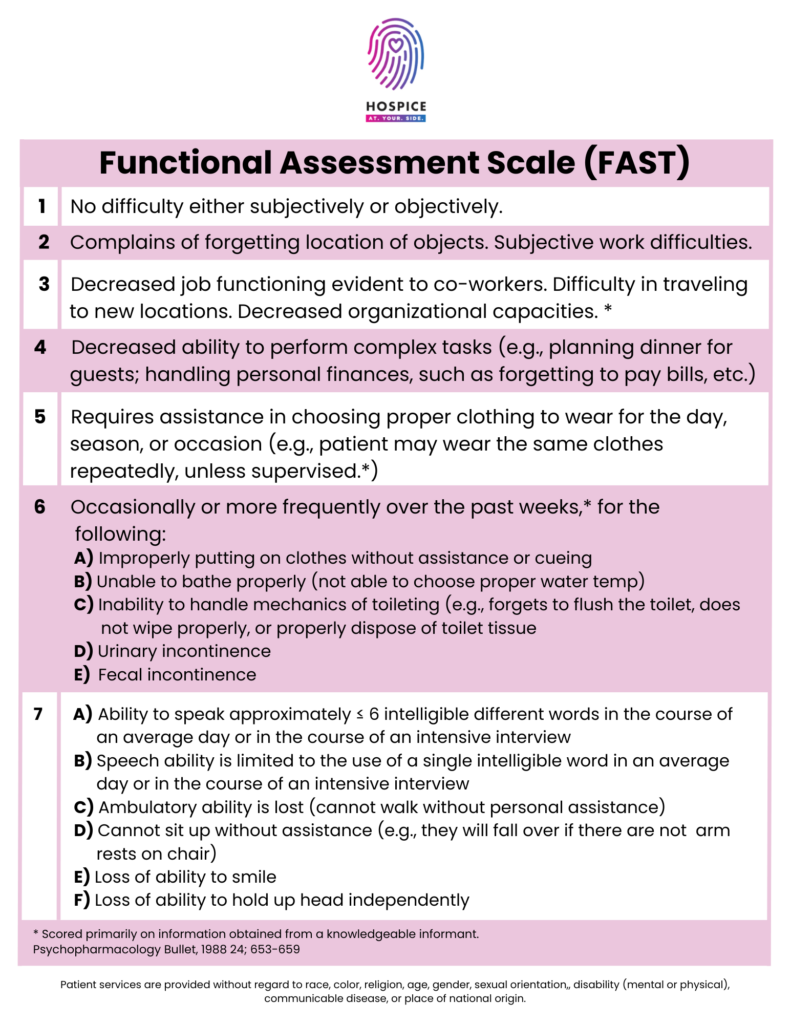
This means a person is no longer able to get around on their own. For example, they require assistance getting from room to room.
Without assistance, you may notice they put their shoes on the wrong feet or their day-time ‘street’ clothes on over their pajamas. They are also unable to bathe without assistance.
This includes urinary or fecal incontinence or both.
This may begin as the patient only saying 5-6 words per day and gradually reduce to only speaking one word clearly until they can no longer speak or communicate at all. This will also include the inability to smile.
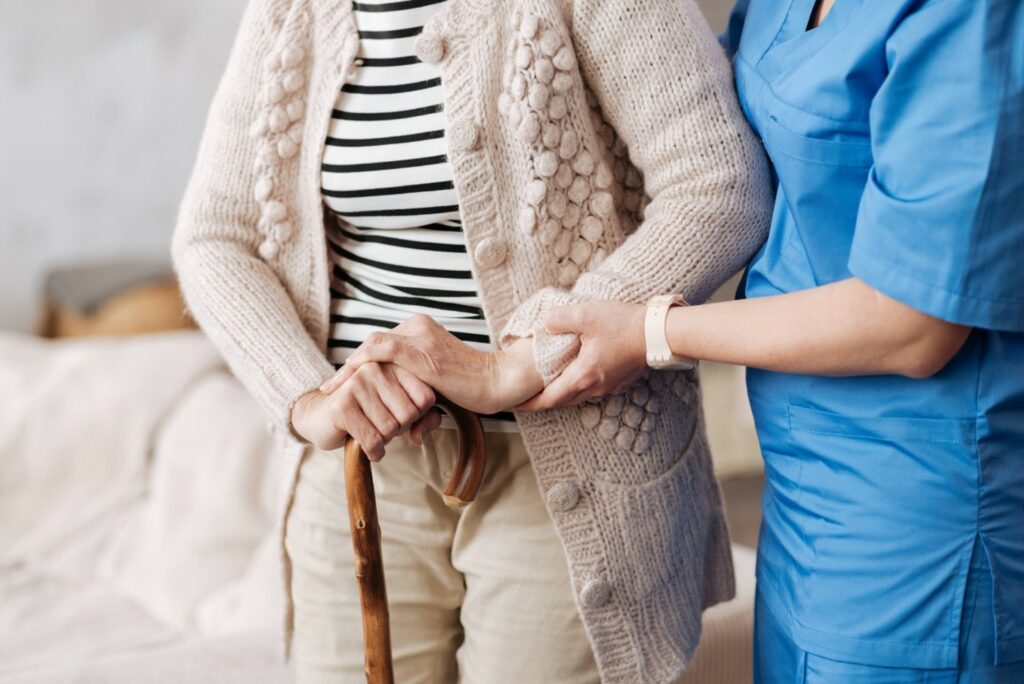
Hospice care is for patients with a life limiting illness and a life expectancy of six months or less. The main focus is to manage pain and symptoms and ultimately keep the patient comfortable. When you choose hospice for your loved one, their care team can help you to understand what to expect in the final stages of Alzheimer’s. They will also provide support to you and the rest of your family throughout the end-of-life process.
If you would like more information on hospice care for Alzheimer’s patients, please contact us. We are here to answer any questions you may have.

We all grieve differently, but one thing remains true for everyone: the importance of taking care of yourself. Whether you’ve found yourself in a state of just going through the motions or you’ve put all your focus on taking care of your loved ones, it can be easy to put your own needs on the back burner when facing the loss of a loved one.
However, it’s absolutely imperative that you take time to focus on yourself, too. In honor of Mental Health Awareness Month, we are discussing the importance of self-care throughout the grieving process.
Mental Health Awareness Month dates all the way back to 1949 when the National Association for Mental Health (now known as Mental Health America) first organized the observance in the month of May to help raise awareness and lessen the stigma attached to mental illness.
For a long time, society looked at mental illness as being just one thing. There was always a negative stigma attached to the term, and people often thought of those living with a mental illness as having ‘gone mad’. However, that is simply not true. Over time, we’ve learned more about the many layers and types of mental illness.
Mental illness is the term used to describe mental health conditions that impact a person’s mood, thinking, and behavior. Common mental illnesses include:
Losing a loved one can be a traumatic experience. You may feel as though you lost a part of yourself and that your life will never be the same. While there is some truth to this, it’s important to remember that you are still here and must go on living your life.
“We don’t move on from grief. We move forward with it.”
– Nora McInerny
Feelings of sadness, anger, loneliness, and hopelessness are all common throughout the grieving process. However, these feelings can sometimes develop into chronic grief which can in turn become a mental illness. In some cases, grief can lead to depression.
Symptoms of chronic grief can include:
Self-care used to be thought of as bubble baths and pampering yourself, but there is much more to self-care. Just like the grieving process, self-care can look different for everyone. But the overall concept is to take care of yourself physically, mentally, and emotionally.
To take care of yourself physically is pretty simple: eat a well-balanced diet, drink plenty of water, exercise regularly, and practice healthy hygiene habits. However, taking care of yourself mentally is a little less cut and dry. This is where it really differs from person to person. To take care of yourself mentally and emotionally, you need to take time to do the things that make you feel good and happy. Hobbies are a good place to start when focusing on taking care of yourself mentally. Maybe you enjoy sitting outside and reading a good book, maybe you are an artist, maybe you enjoy taking long walks with your dog. Whatever it is that leaves you feeling happy and fulfilled, do it!
Research shows the more you practice self-care, the more confident, creative, and productive you are. This also leads to experiencing more joy, making better decisions, building stronger relationships, and communicating more effectively. Overall, you will be in a better frame of mind, making you a better version of yourself. This is not only good for you, but it’s also good for those who depend on you.
When you take time to take care of your whole self (physically, mentally, and emotionally), it will help you to process your feelings of grief in a healthier way.
Always remember that you do not have to face the journey of grief alone. Lean on friends and family to help you through. Don’t be afraid to talk about your feelings. Sometimes we feel the need to be strong for those around us. If this is the case and you would feel more comfortable talking to someone outside the family, lean on the support of your hospice bereavement team. Our kind, compassionate bereavement coordinators are always available to talk or just listen. Never hesitate to reach out.
If you or someone you love is struggling with their feelings of grief and would like to talk to one of our bereavement coordinators, please don’t hesitate to reach out to one of our hospice providers.
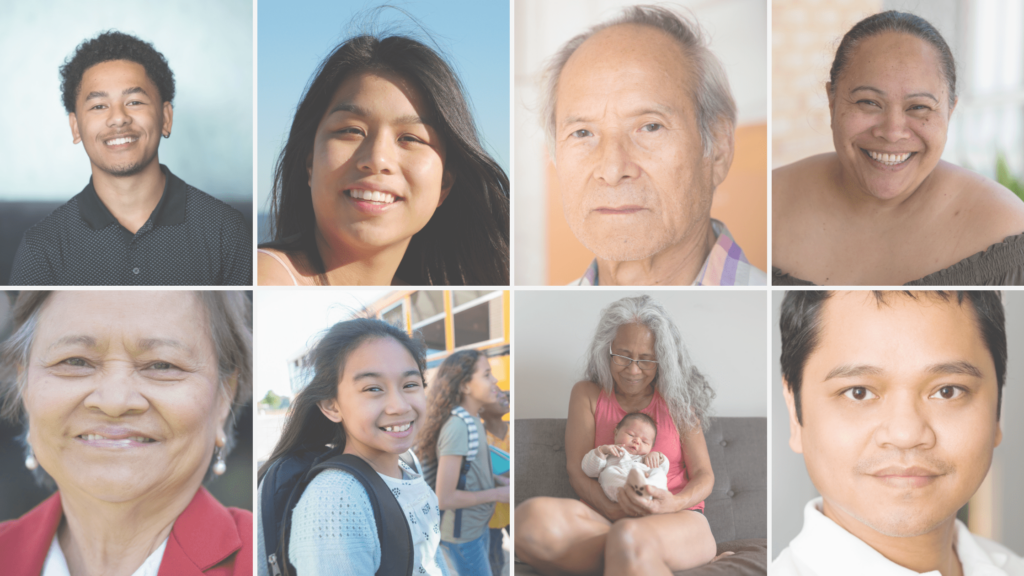
By: Anonymous
May is Asian American and Pacific Islander (AAPI) Month, a time to learn about and celebrate the rich histories and cultures of Americans from the Asian continent and the Pacific Islands. The AAPI population is remarkably diverse, with 24 million people tracing their roots to over 30 countries. Many different cultures mean many different beliefs and traditions regarding the passage from life to death.
Demographic research reveals that AAPI Americans are less likely to access hospice and palliative care than other groups. Asian Americans, for example, have been shown to use fewer end-of-life services. Studies attribute this to cultural beliefs, language barriers, attitudes about death, and family-centered decision-making. But good hospice and home care can meet these challenges.
We recognize that the AAPI community has diverse attitudes and practices surrounding illness, hospice, and death.
Although some AAPI practices are widely shared, such as respecting elders, using white and yellow colors, and burning incense, some practices vary. Chinese and Korean values can require the family to keep vigil by a dying loved one. The Chinese tradition, however, may maintain a hierarchy within the family structure, while the Korean tradition might maintain the division of genders. In other AAPI traditions, individuals, like expectant mothers, are discouraged from visiting someone at their end-stage of life for their own protection. In addition, some cultures place great value on a loved one being cared for in their own home at the end of their life.
We understand that these spiritual practices can, and should be, honored. We’re here to accommodate by providing professional, competent, caring, in-home service that maintains sensitivity to these values.
Care goes beyond medical support. We are prepared to and can help you and your family with the hospice and bereavement journey with sensitivity toward AAPI’s religious, spiritual, cultural, and personal beliefs. This respect extends beyond rites and rituals and into practical care. The Native Hawaiian belief that spiritual essence (mana) is in all parts of the body can, for example, influence feelings about organ donation or cremation. But awareness of this belief informs our good care for a Native Hawaiian in the end stage of life.
The AAPI population is growing. By 2050, AAPI will become nearly 10% of the total United States population. It’s important that they can get the end-of-life care they need. Our staff ensures that everyone in our care, their family, and their loved ones are treated with respect.
Some Eastern philosophies view death as part of a cycle in which a loved one’s passage serves as a reminder to celebrate the miracle of life. Our team celebrates the lives of the people we care for, and what makes each of them unique. We’re proud to join this month’s celebration of Asian and Pacific Islander American Heritage Month. We invite interested AAPI Americans to learn about our hospice and in-home services, confident their culture and traditions will be honored.

By: Anonymous
We invite all community members to join us to recognize National Hospital Week, May 8 to May 14, 2022. Here’s more about this yearly observance and how we honor it at Hospice At Your SIde.
National Hospital Week is observed every year during the week that includes May 12, Florence Nightingale’s birthday. Florence Nightingale is best known for founding modern professional nursing and demonstrating the importance of nurses and their roles in the healthcare community.
Established in 1953 by the American Hospital Association, National Hospital Week highlights and recognizes hospitals and healthcare workers and the many innovative ways they support their communities.
Our team at Hospice At Your Side understands how challenging and demanding the hospital setting can be. We want to thank physicians, nurses, social workers, discharge planners, aides, and all other clinical staff members who have supported and cared for our patients and communities over the past year, especially given the unique ongoing challenges presented by the COVID-19 pandemic. Your hard work, long hours, and dedication to your communities have helped improve the quality of care for thousands of people in need.
As leading home health and hospice treatment providers, we extend extra thanks to hospitals that partner with hospice providers. Your care and services have dramatically improved the quality of life for terminally ill patients and their families. In addition, you have given our team the opportunity to help these families save on hospital-related costs and deliver highly personalized care that helps them fulfill their loved ones’ final wishes.
We look forward to continuing our relationships with hospitals that partner with hospice treatment providers and are confident that together we can handle any unforeseen challenges that may come our way. In honor of National Hospital Week, thank you.
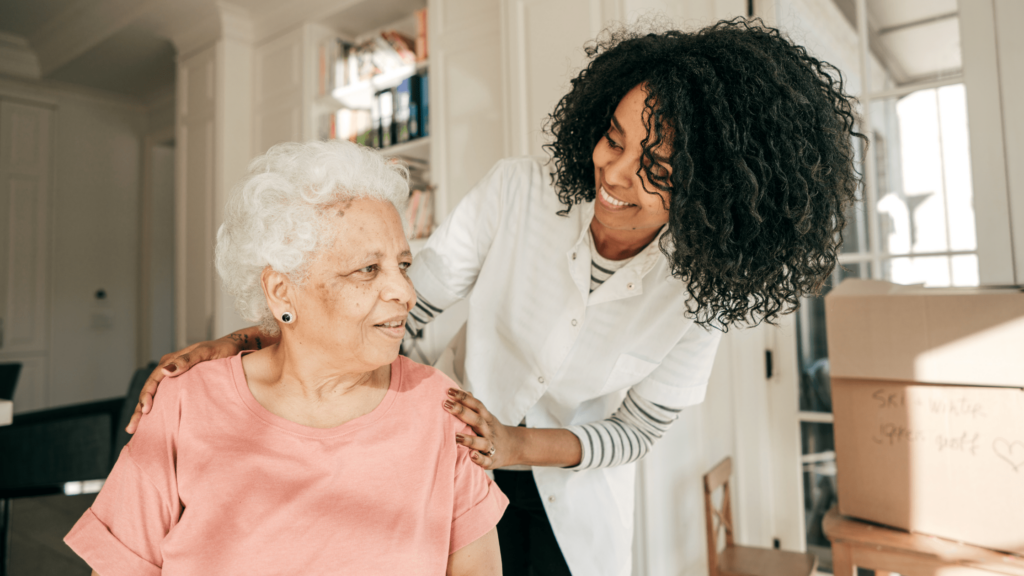
Some of the most common misconceptions about hospice care involve when it’s appropriate for a patient to elect hospice services and what diagnoses qualify a patient for hospice. People often assume hospice is only for cancer patients, but that is simply not true. You may be surprised to learn that stroke patients also qualify for hospice services.
Strokes are the number five cause of death and a leading cause if disability in the United States. A stroke is defined as a disease that impacts the arteries leading to and within the brain. It occurs when a blood vessel that carries oxygen and nutrients to the brain is either blocked by a clot or ruptures. When this happens, part of the brain cannot get the blood and oxygen it needs, causing it and brain cells to die.
The American Stroke Association uses F.A.S.T to help us identify warning signs of a stroke.
If one side of the face is drooping or numb, this can be a common sign of a stroke. One way to help to determine this is by asking the person to smile. If their smile is uneven, that is an indication of face drooping caused by a stroke.
Another sign can be if one arm feels weak or numb. Ask the person to raise both their arms. If one arm drifts downward, it could be a sign of a stroke.
Slurred speech is a third sign of a stroke.
If someone is showing these three warning signs of a stroke, call 911 immediately.
Other signs and symptoms of a stroke can include:
Given the danger of strokes, it’s important to understand the different risk factors, including both those within and out of your control.
Some risk factors of stroke are within your control. These can include:
As with anything else, some stroke risk factors are beyond your control. These can include:
Hospice can benefit patients who are in the terminal stages of a stroke. The following criteria could be indicators that it may be a good time to consider the additional support of hospice.
If you are still unsure if your loved one qualifies for hospice, or if you have any questions about hospice for stroke patients, please don’t hesitate to contact us.
Volunteers are an essential part of the hospice care team. The difference they make for our patients and their families is immeasurable. Whether it’s through direct care or administrative work behind the scenes, there are countless ways a hospice volunteer can help.
We are beyond grateful for the incredible people who volunteer their time and talents to make a positive difference in our patients’ lives. In honor of National Volunteer Month, we’d like to recognize just a few of them. We asked our volunteers to share what made them decide to be a hospice volunteer and what they find most rewarding about their experience.
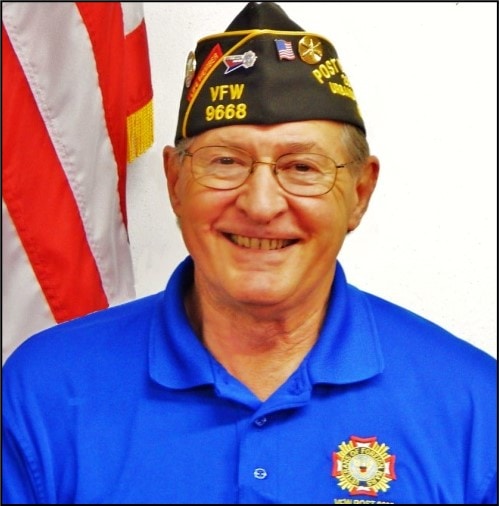
“On September 10, 2018, Mr. Kelly Gafkjen, Chaplain, Hospice of the Midwest, was a guest speaker at our Urbandale-Johnston Veterans of Foreign Wars monthly meeting. Kelly was on a mission seeking veterans to talk to veterans in local hospice care in their homes or hospice facilities. Many veterans in hospice would like to share their life and military experiences, but feel only a fellow veteran can associate with their feelings. At the conclusion of his presentation, Kelly asked that we consider volunteering, receive some minimal training, and agree to talk to veterans who are seeking fellow veterans to talk to. After our meeting concluded, a number of us discussed the information presented by Kelly, and three of us thought this was right in line with our VFW mission of “Veterans helping Veterans”. Contact was made with Kelley and the three of us started our training at the Fall Training Session September 27, 2018 , conducted by Kelley and Taylor Schneider. By the end of October we had finished our training and were waiting for our first assigned veteran.
Under the guidance of Taylor I was introduced to my first veteran during a pinning ceremony on November, 30, 2018. Since then I have had the privilege of meeting and sharing both civilian and military experiences with 9 veterans of WW II, Korea, Vietnam and the Cold War eras. Every veteran, whether Army, Air Force, Navy or Marine, were all comrades and had their own unique and fascinating stories to tell. Some sad, some humorous, but all seemed willing to share with enthusiasm. I so much enjoyed visiting with these men, and I only hope they felt the same comradery that I felt while in their presence. I will miss these veterans but look forward to meeting my next comrade.”
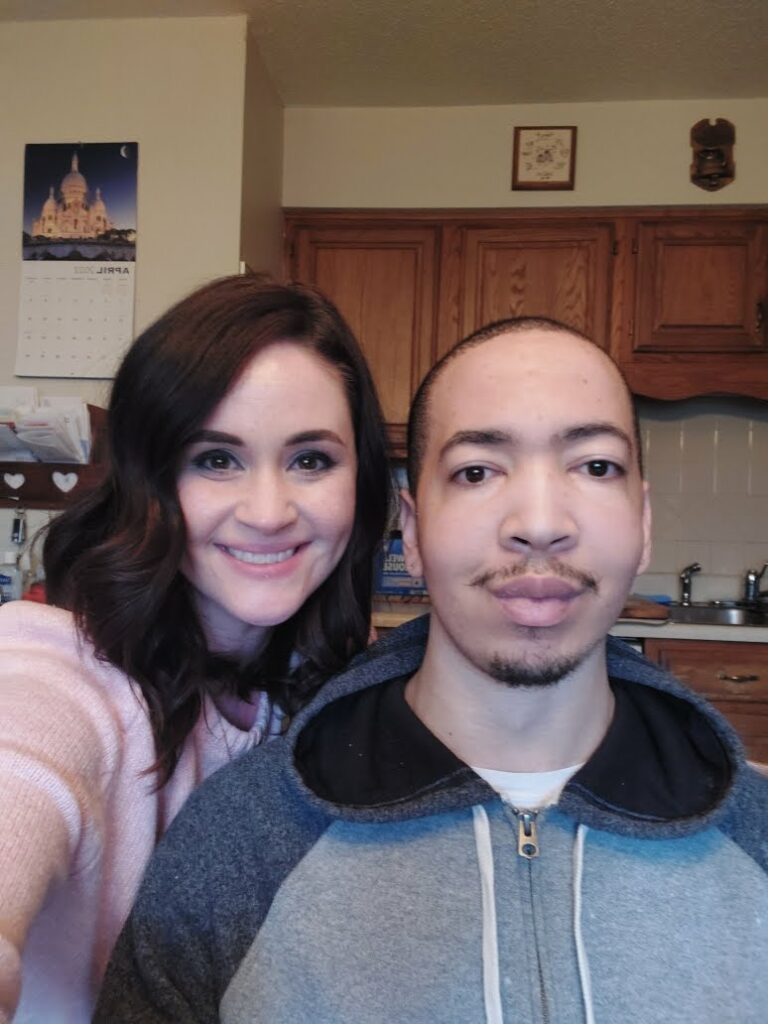
“Kendall and I (Ashley) love volunteering for Premier Hospice! We started in 2019 and volunteer weekly. Kendall states that he enjoys working in an office setting and learning new skills. I have been working with Kendall through the Medicaid Waiver program for almost 5 years. Seeing Kendall get to experience a work-type setting and learn new skills has been very rewarding. Nikki is a lot of fun to work with and always makes us feel appreciated!”
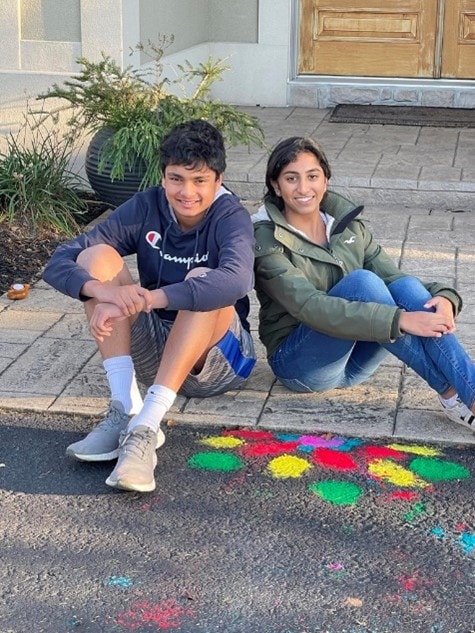
“We started volunteering for a local hospice during the pandemic (2020). We stumbled upon the opportunity from an email our mom received asking for donations of homemade casseroles and cards for hospice patients and their families. At first, it started by making occasional cards and casseroles, and then it turned into a routine every other week activity. This evolved into helping other hospices including including Grane Hospice. We have made homemade cards and even have given a virtual concert for the patients at Grane Hospice. We feel grateful to be able to give back to others in need even during a worldwide pandemic. It shows no matter what the circumstances, we can help others in our community. All this volunteer work has inspired us to create our own non-profit group called Rays of Sunshine, benefiting local hospices. We hope to expand and help even more local hospices in the future.”

“Coming from a family where both parents were in the medical field, I have had an interest in medicine ever since I can remember. In the pursuit of getting involved with medical volunteering opportunities, I wanted to commit to something that would provide meaningful experiences in vulnerable people’s lives, as well as my own. Although my patients’ physical bodies are failing them, they still have great wisdom to impart when given the chance to share and be heard. Many times, I leave the local assisted living facility with an enlightened perspective that I believe will serve me well in the career I am aspiring to have. From hearing first-person stories of World War II experiences to celebrating 96 years of living, there is always a window for valuable learning opportunities when I have the chance to spend time with these folks whom I now consider my friends.”

“I Prayed about being a Hospice Volunteer and this is how the Lord is using My ability as a Hairdresser, to bring Comfort and Joy to the Patients. The most rewarding aspect is seeing the Happiness in the Faces of the Patients and their Families. Working with Them is a Blessing to Me.”
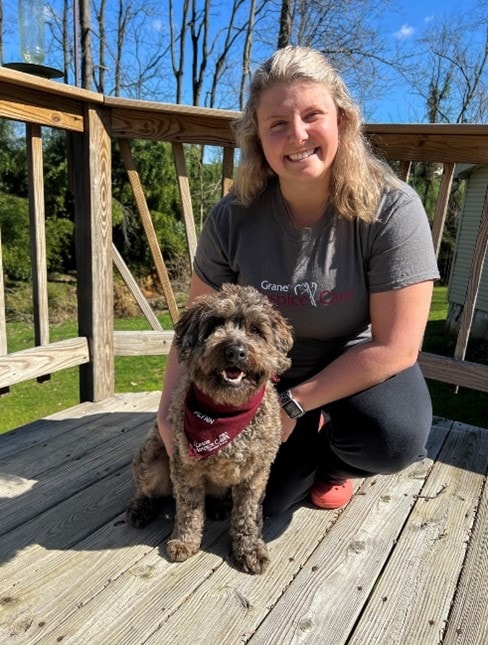
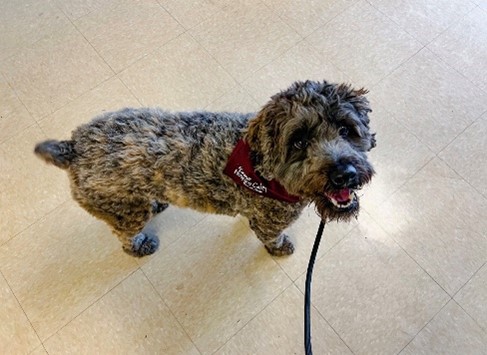
“Being a hospice volunteer is about having a passion and love for helping others. No, I don’t physically help them but the most rewarding part about volunteering with my dog, Flynn, is seeing the joy it brings to residents. Residents look forward to our visits and remember us from week to week, allowing special connections to be made. I’m thankful for the opportunity Flynn and I have to give our time and make people smile.”
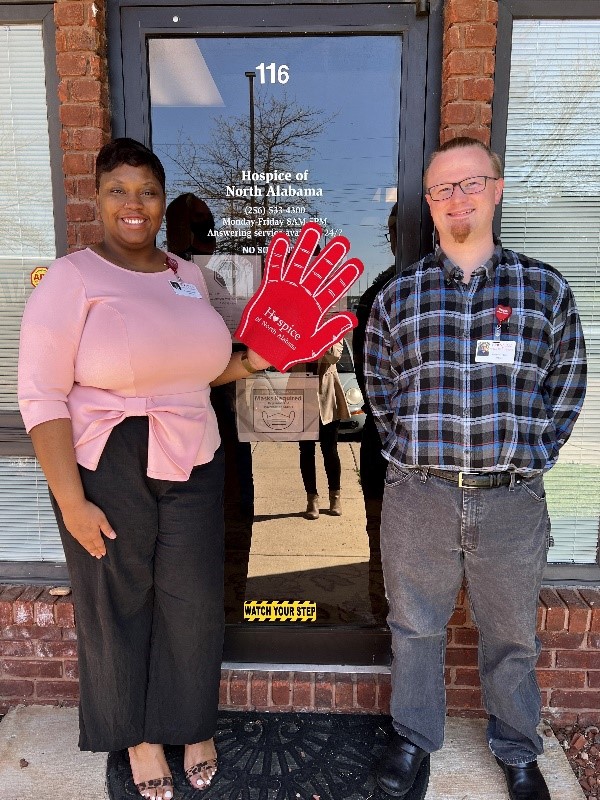
Kennedi and Ernest – graduate level social work students with Alabama A&M University and the University of Alabama – are student volunteers with Hospice of North Alabama in Huntsville. They sit with patients to provide caregiver respite. Hospice volunteer work allows students to garner a strong understanding of how social workers broker services within a healthcare agency as well as how to coordinate with various other healthcare and social service agencies.
Ernest states “I have learned that the process of dying and bereavement is as diverse as the families we serve. The first step of serving this population is engaging the patient and/or caregivers on what they want this time in their lives to be like—no two answers are the same.”
Along with the home environment, they also work with residential care communities to provide comfort and support. This gives them experience working with diverse community types and medical care needs.
Kennedi states “The things I’ve learned while interning at Hospice of North Alabama have prepared me to be a more caring and competent social worker. The compassion and kindness that HNA shows to the patients has been extended to me from the very beginning, and I’m so grateful. This has been the greatest experience of service I have committed myself to.” Ernest agrees, adding: “Knowing that you have provided support to a patient and/or their family in this transition period is rewarding. Establishing the trust that fosters comfort and emotional resiliency is an experience that will give volunteers a unique understanding of how health care best serves patients in all life stages.”
“My internship and volunteering experience with Premier Hospice was meaningful and fulfilled my longstanding desire of working with end-of-life services to clients and their families.
I enjoyed working with a well-resourced team that included a chaplain, bereavement coordinator, social workers, liaisons, nurses, a doctor, and a volunteer coordinator. Each of them brought to bear their own particular skillset, and we all collaborated to make our clients’ end of life as comfortable and dignified as possible.
Besides teamwork, I enjoyed, I enjoyed visiting with my client once a week. My primary role was to support and strengthen the care providers so that they might function better.
I also enjoyed supporting other team members by making caring calls to clients or their families. It was amazing how much comfort and reassurance I could bring to them through the calling service. My participation in the online bereavement group was my gain in the understanding and knowledge of the process in group work, particularly for grieving families.
Through my time with Premier Hospice, I have grown to better appreciate the important role of leadership in the hospice setting. The internship was profitable to my professional growth and development.”

“I volunteer with hospice to facilitate new transitions. In January 2020, I completed the training to become an End-of-Life Doula in New York City. In my move to Indianapolis, it was important for me to find a strong hospice program where I could be actively involved in the moments of life and death with others.
I volunteer because dying is an important cycle in every community. It is never easy to participate in the dying process, it pulls at every piece of your being. But there is nothing more rewarding than helping a patient or caregiver smile again while recalling a significant life moment. There is nothing more rewarding when the world feels burdensome, to help others find peace even for a single second.”
Thank you to these incredible individuals – and to all the volunteers on our team – for all you do for our patients and their families. You are amazing!
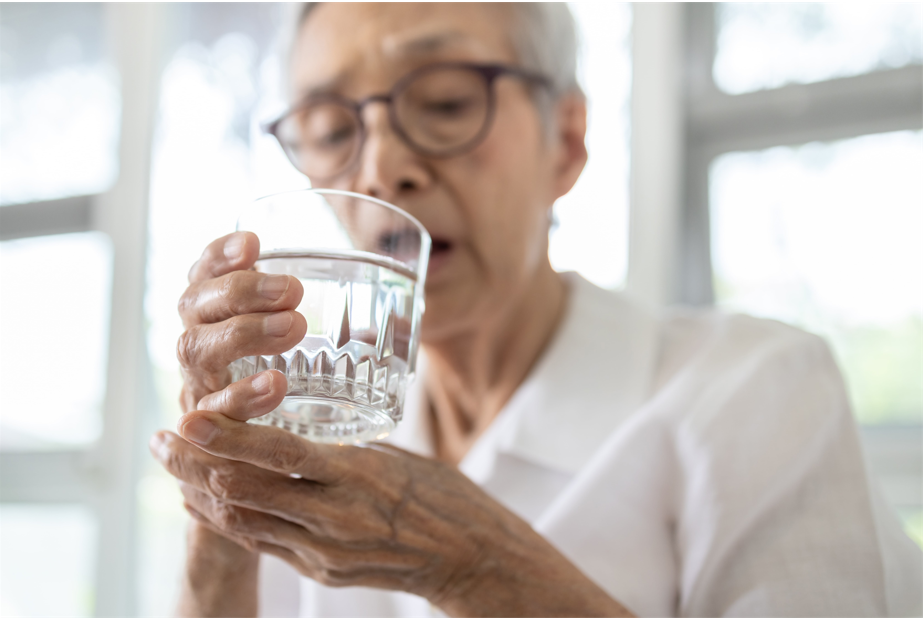
By: Dr. Laura Mantine
Parkinson’s disease (PD) is caused by the loss of dopamine-producing nerve cells within the brain. The loss of dopamine causes symptoms like stiffness, slow movements, balance problems, and depression. There are certain specific motor symptoms that accompany Parkinson’s disease. A resting tremor happens when a body part, usually a hand or foot, shakes slightly when a person is not using it. Bradykinesia is when movements are extremely slow, and patients may have freezing episodes which are temporary, involuntary periods where a person is unable to move. A PD patient may also experience changes in speech, smaller handwriting due to difficulties performing repetitive motions, and a “masked” face due to a loss of facial expression. Patients are also at an increased risk of falls from a combination of poor balance and severe stiffness. A PD patient may develop difficulty swallowing which can lead to weight loss, malnutrition, dehydration, and pneumonia.
There are also non-motor symptoms that are present in Parkinson’s disease. Parkinson’s dementia is a significant, permanent decline in attention, memory, and problem-solving that impairs daily life. A patient may develop hallucinations or delusions throughout their disease course which can lead to increased caregiver stress. Patients may also suffer from severe constipation, urinary problems, and sleep disorders that affect their quality of life.
As a progressive disease, Parkinson’s disease symptoms will slowly worsen over time. While PD affects people in unique ways, there are typical patterns of progression, defined by five stages. In stage 1 and stage 2 of Parkinson’s, patients may experience mild shaking and stiffness. As the disease advances into stages 3 and 4, loss of balance and slowness of movement begin to impair daily functioning. Stage 5 is the final, most debilitating stage of PD. In this stage, patients are wheelchair- or bedbound and require 24-hour nursing care. Patients are said to have end-stage Parkinson’s disease at stages 4 and 5 of the disease. In end-stage Parkinson’s disease, symptoms are so severe that medication stops working well, and patients require full-time caregiver assistance. Eventually, end-stage PD patients become candidates for hospice care, a service that focuses on easing symptoms and improving comfort at the end of life.
There are no formal PD eligibility guidelines for determining when a hospice referral should be made, and there is no definite timeline when it comes to the final stages of Parkinson’s disease. However, hospice care is available to patients who are expected to live six months or less. Doctors and hospice agencies will consider factors relevant to PD like a patient’s history of falls, hospitalizations, withdrawal from activities, inability to perform self-care, and lack of benefit from medication. There are very general hospice guidelines intended to cover a broad-spectrum of neurological disorders. The guidelines for neurological illnesses state that patients must meet one of the following to be eligible for hospice: critically impaired breathing or rapid disease progression in the past year.
Critically impaired breathing is unlikely to be applicable in Parkinson’s disease. Primary respiratory problems are not typical in advanced PD. The second criterion, evidence of rapid disease progression in the prior year, tends to be more useful for patients with end-stage PD. A rapid disease progression means that patients are bedridden, have unintelligible speech, require a modified diet, and need major assistance with activities of daily living. Nutritional impairment is common in end-stage PD. Patients are unable to maintain sufficient oral intake and experience weight loss and dehydration. Life-threatening complications that may occur in end-stage PD include recurrent aspiration pneumonia and pressure ulcers of the skin.
Hospice care is an extra layer of support to help care for loved ones with end-stage Parkinson’s disease. The goal of hospice care is to optimize comfort and ease physical, emotional, and mental suffering during the dying process. Members of a hospice care team include a doctor, nurse, social worker, and home health aide. Most patients with PD die from the same diseases such as heart disease, stroke, and cancer, that others do. As such, hospice care may be considered even before a patient with PD reaches the end stages of their disease. Deciding when it is time to enter hospice care can be a difficult decision for a person and their loved ones. However, being admitted to hospice can ensure a person and their caregivers have access to a variety of services that are needed.
References:
“Eligibility for End-Stage Parkinson’s Disease Hospice Care.” By Colleen Doherty, MD. Published on October 24, 2021. Medically reviewed by Isaac O. Opole, MD, PhD. https://www.verywellhealth.com.
“The Role of Hospice in Parkinson’s.” Parkinson’s Foundation. 2018. https://www.parkinson.org.

By Jacquelyn Buffo, MS, LPC, CAADC
Losing a loved one to a terminal illness is one of the most painful experiences you can go through. The loss of a spouse or partner is traumatic for many people, and the grief journey can feel overwhelming, confusing, and painful. However, each person grieves and works through the grieving process at their own pace and in their own way. If you are grieving the loss of a partner or spouse, you are not alone. The month of April is Bereaved Spouses Awareness Month, observed since 2008. Bereaved Spouses Awareness Month provides support and resources for bereaved spouses.
The difficulty of losing a spouse is followed by a grieving process that can be challenging for many people. Grief is a process and includes many different types of symptoms, some more severe than others. Feelings such as shock, sadness, numbness, and even guilt can occur after losing a spouse. Your experiences of grief may be different than others, and it is dependent upon factors specific to you. Grief can present as intense emotions and can also present in behaviors.
For example, bereaved spouses may experience:
There is no right or wrong way to grieve, and support and help are available to you. An available resource along your journey of bereavement is hospice care. Hospice can help spouses prepare for the impending loss of a loved one. The hospice’s bereavement team can also help spouses after a patient passes. The mission of hospice care is to deliver compassionate, quality care to individuals with terminal illnesses and support the families through the caregiving phase and bereavement process.
Many spouses spend a significant amount of time and energy caring for and tending to their ill partners. But unfortunately, they may overlook their own needs and feelings during this time. Utilizing the hospice team as a source of support can help spouses tend to their emotions and needs when it is difficult.
If you are struggling with the loss of a loved one, it is vital to get the help and support you need. First, talk to a trusted family member or friend about what you’re going through. Loved ones can be strong sources of validation, support, and compassion. You can also talk to your doctor if you notice a change in behavior and mood or if you are having difficulty performing the normal activities of daily living, such as showering regularly and eating. Your doctor may be able to provide you with medication and can also provide you with referrals to a grief counselor or support group near you.
Sources:

By: Laura Mantine, MD
“Wear the white coat with dignity and pride, it is an honor and privilege to get to serve the public as a physician.”
― Bill H. Warren
Physicians display heroism and courage every day in hospitals, nursing homes and clinics. National Doctors’ Day, celebrated on March 30th, is an annual observance aimed at appreciating physicians who help save lives everywhere. The holiday first started in 1933 in Winder, Georgia, and since then it has been honored every year. The idea came from Eudora Brown Almond, wife of Dr. Charles B. Almond, and the date was chosen as it marked the anniversary of the first use of general anesthesia in surgery. This month, National Doctors’ Day continues to highlight many questions, concerns and fears about what the future of medicine holds. The COVID-19 pandemic has already left its indelible mark on American’s health and well-being. Many doctors have courageously set aside their own fears to help those in need, lend a hand to an overburdened colleague, gather supplies and equipment for those who may soon go without, and accelerate the research to develop a vaccine or medication that may bring an end to this pandemic once and for all.
As the COVID-19 pandemic continues to unfold and upend American life, physicians, nurses, and the health care workforce are leading a remarkable response effort by putting their health and safety on the line every day. There have been many cases in the U.S and around the globe in which physicians have fallen seriously ill or died after treating patients for COVID-19. The physical toll alone is daunting with extremely long and taxing hours at a patient’s bedside. The emotional toll is just as significant, and enough to overwhelm even the most seasoned and experienced doctor. Ultimately, no one can say for sure how long this health threat will last or how much more our nation’s physicians will be asked to give.
The COVID-19 pandemic reminds physicians of the obligation to place a patient’s welfare above our own, the need to protect and promote public health, and the ethical considerations involved in providing care under the most urgent and trying circumstances. Physicians embrace all these responsibilities and more as a routine part of their professional lives. This fact does not diminish the burden a physician will undertake on a patient’s behalf. The selflessness displayed in the face of a deepening health crisis is truly extraordinary.
When physicians are asked why they chose their profession, answers will of course vary. One theme tends to underlie all the responses: a profound commitment to helping others. Physicians are called upon to help in moments like the COVID-19 pandemic. Dr. Patrice A. Harris, former president of the American Medical Association, said in her inaugural address “Physicians don’t run from challenges. We run toward them.” Physicians undertake these efforts because they are called to do so, not to earn public recognition or thanks. People should thank them and offer heartfelt gratitude and praise, not on National Doctors’ Day but every day.
References:
Hospice is a special type of care for those living with a terminal illness and a life expectancy of six months or less, should the disease run its natural course. It uses a team approach in which the care team focuses on the patient’s physical, emotional, and spiritual needs.
Although over 1 million patients and families experienced the value of hospice firsthand in 2018 alone*, there are still a lot of misconceptions about hospice care.
* https://www.nhpco.org/hospice-facts-figures/
A big part of hospice is education. We want to do all we can to educate our communities about the services hospice offers and how they can benefit you and your loved ones, starting with some common misconceptions.
Many people think that when they choose hospice, it means they are giving up hope. We have this instinct to fight and fight until the very end, and to stop fighting means to give up. However, hospice isn’t giving up. It is giving yourself and your loved ones permission to stop running back and forth to the hospital and stop the exhausting curative treatments. Hospice allows patients to be comfortable and at peace and to have the best quality of life possible.
Many people believe hospice is a place you must move to when you elect services. This is not the case. Hospice services can be provided wherever you call home – including your residence or a skilled nursing facility. The majority of patients on hospice services live at their home and continue to live at their home throughout their time on hospice.
Another common misconception about hospice is that it will cost you and your family a lot of money. The truth is actually quite the opposite. Hospice does not cost you anything out of pocket. It is covered by Medicare, Medicaid, Veterans’ benefits, and most private insurances.
This includes not only the cost of nursing visits, but also the cost of medications and medical supplies.
Learn more about how hospice is paid for.
The goal of hospice is to keep the patient’s pain under control and to keep them as comfortable as possible. While pain and symptom management can include giving the patient morphine and other comfort medications, not all patients will need it.
Hospice does not expedite death and does not help patients die. In fact, we sometimes find that patients live longer than expected when they choose to receive the support of hospice services. Hospice is about ensuring the patient is no longer suffering from the symptoms of their terminal illness. It keeps them comfortable by managing pain and symptoms, such as shortness of breath or restlessness.
This could not be further from the truth. When you elect hospice, you (or your power of attorney) are always in control. You are in the driver’s seat, and hospice is here to support you. If you decide you no longer want the support of hospice, you can make that decision. And if you are ready for hospice again at a later time, you decide that, too.
Hospice will not tell you what to do. You tell hospice what your care goals are and what you want. If you do not want certain medications, they will not be forced on you. The hospice care team will work with you to honor your wishes in every aspect of your care.
Many people think hospice is only for the very end of a patient’s life, but that’s not the case. Although hospice is for patients who have a life expectancy of six months or less (should the disease run its natural course), you can be on hospice for much longer than that – and many patients are.
Hospice patients are assessed regularly during each benefit period. As long as they continue to meet Medicare criteria, patients can continue to receive hospice support, indefinitely.
You do not have to give up your primary care physician (PCP) when you are admitted to hospice. In fact, your PCP is a very important part of the hospice care team. The hospice team will work with your physician to be sure they are updated on your condition and any changes in your care plan.
It is commonly thought that only cancer patients can receive hospice support. However, hospice is for any patient with any terminal diagnosis. Other common diagnoses of hospice patients are end-stage lung diseases (such as COPD or emphysema), heart disease, kidney disease, Parkinson’s, ALS, Alzheimer’s and other Dementias. Patients who have multiple chronic illnesses, that together result in their health being more fragile, also qualify for hospice services.
These are only some of the most common misconceptions about hospice care. If you are still feeling unsure of whether you or your loved one qualify for hospice or if it’s the right choice for you, please feel free to give us a call. We are happy to answer any questions you may have about the services we provide.
Just because you call, doesn’t mean you have to elect hospice. It never hurts to ask questions and learn more. If it’s not the right time now, maybe it will be later. And by calling now, you’ll have all the information you need to make an informed decision when the time is right.